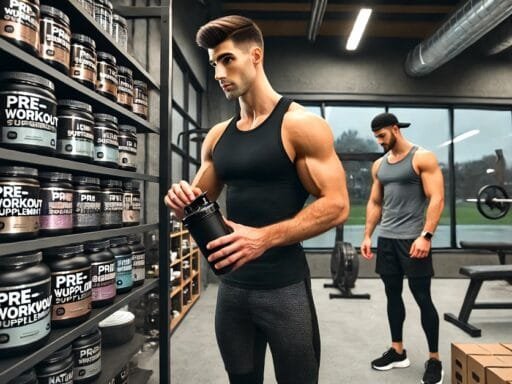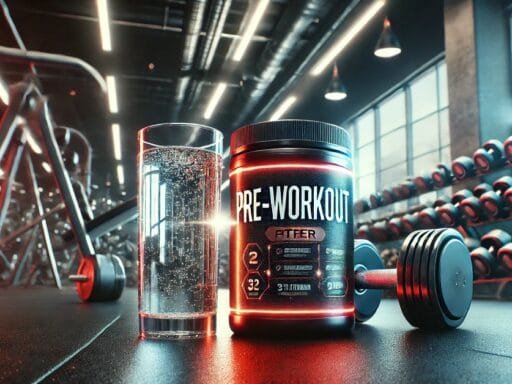Introduction: Why Wrestling Workouts Matter
When it comes to building strength and power, few training methods are as effective as wrestling workouts. These workouts aren’t just for athletes on the mat; they offer immense benefits for anyone looking to enhance their wrestling fitness and achieve a higher level of conditioning. Whether you’re a professional wrestler or someone simply aiming to improve your overall fitness, wrestling workouts can help develop key athletic attributes such as explosive power, endurance, and agility.
By focusing on functional movements and compound exercises, wrestling workouts strengthen both the muscles and the mind, improving your ability to perform in both physical and mental challenges. The beauty of these workouts lies in their versatility. They build core strength, increase cardiovascular endurance, and promote coordination, making them an excellent choice for those looking to transform their fitness routines.
Incorporating these workouts into your fitness plan not only benefits your strength and power but also prepares you for any athletic challenge, pushing you to reach new levels of performance. With consistency and the right guidance, wrestling workouts can be the catalyst for lasting change, helping you become stronger, more resilient, and ready for anything.
Table of Contents
Key Benefits of Wrestling Workouts
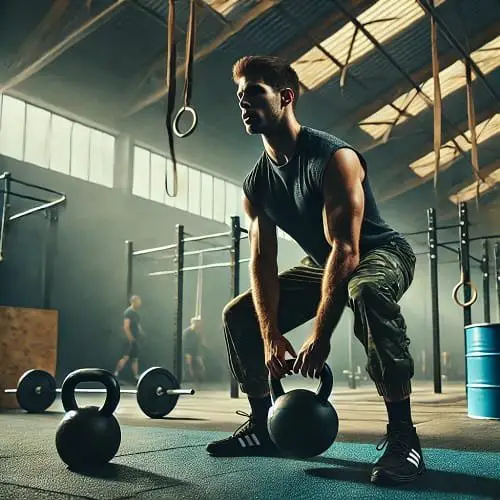
Wrestling workouts are not just about building physical strength; they offer a comprehensive approach to improving overall athleticism. By incorporating a combination of strength, power, agility, and endurance, these workouts provide benefits that extend far beyond the wrestling mat.
One of the most significant advantages of wrestling workouts is the development of endurance. Through intense conditioning drills and high-intensity exercises, these workouts help athletes build stamina and cardiovascular capacity, allowing them to sustain performance for longer periods. Whether you’re wrestling for several minutes in a match or completing a series of strenuous exercises, your endurance will be significantly improved, giving you a competitive edge.
Another critical benefit of wrestling workouts is the focus on explosiveness. Explosive movements like sprints, jumps, and rapid changes of direction mimic the dynamic nature of a wrestling match. These workouts enhance the ability to generate force quickly, helping athletes react faster and execute powerful moves during competition. The focus on explosiveness translates directly into improved speed, power, and quickness.
In addition to these physical benefits, wrestling workouts also contribute to overall strength development. Compound exercises like squats, deadlifts, and kettlebell swings help build core strength, stability, and muscle mass. This focus on functional fitness strengthens the body in a way that improves real-world performance, making athletes more agile and resilient, not only in wrestling but in any sport.
Mentally, these workouts challenge individuals to push beyond their limits. They build mental toughness, perseverance, and confidence—key attributes that drive success both inside and outside of the gym. With consistent effort, wrestling workouts provide holistic benefits, making them an essential training tool for athletes looking to elevate their fitness levels.
Essential Strength Training Exercises for Wrestlers
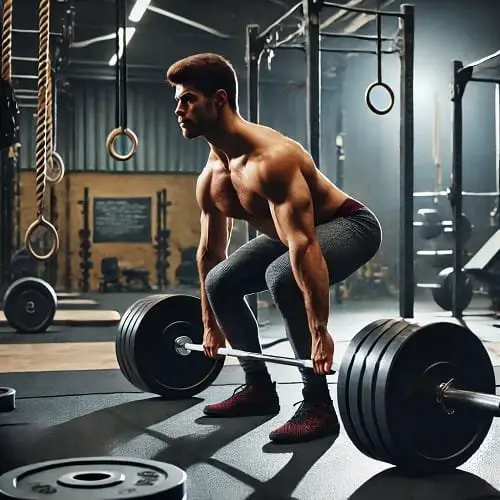
To build the strength and power necessary for success in wrestling, it’s essential to incorporate a variety of strength exercises that target different muscle groups. Weight training plays a pivotal role in improving wrestlers’ strength, providing the foundation for explosive movements, endurance, and overall athletic performance. Below are some of the most effective exercises to include in any wrestling strength routine.
- Deadlifts
The deadlift is a powerhouse exercise that strengthens the entire posterior chain, including the hamstrings, glutes, back, and core. For wrestlers, this movement is crucial for developing the core strength needed for takedowns, escapes, and other grappling maneuvers. A strong posterior chain allows for better posture, stability, and the ability to generate explosive power. When performing deadlifts, maintain a neutral spine, engage your core, and lift with your legs, not your back, to avoid injury. Focus on proper form, and gradually increase the weight as your strength improves. - Squats
The squat is a key exercise for building lower body muscle building and power, specifically in the legs and core. Wrestlers need strong legs for powerful moves such as shooting for a takedown or sprawling to defend. Squats help improve functional fitness by developing the strength and coordination necessary for such dynamic movements. To perform a squat correctly, keep your feet shoulder-width apart, chest lifted, and ensure that your knees do not extend past your toes. Lower your body by bending at the hips and knees, then push through your heels to return to standing. Proper form is critical for maximizing the benefits and minimizing the risk of injury. - Overhead Press
The overhead press is an essential exercise for wrestlers looking to build upper body strength. It strengthens the shoulders, triceps, and upper back, all of which are vital for controlling your opponent, lifting, and pushing movements during a match. The press also engages the core to stabilize the torso. To perform the overhead press, grip the barbell just outside shoulder width and press it overhead while keeping your elbows slightly forward. Be sure to keep your back straight and avoid leaning backward. Start with a manageable weight and focus on controlled movement throughout the lift. - Bench Press
The bench press is a foundational upper body strength exercise that targets the chest, shoulders, and triceps. For wrestlers, a strong chest and arms are necessary for controlling opponents during clinches, pushing off, and executing powerful throws. When performing the bench press, always use a spotter for safety, especially as you increase the weight. Keep your feet flat on the ground, lower the bar to your chest, and press it back up while maintaining a steady, controlled motion.
Incorporating these strength exercises into your routine will develop the muscle building needed for the explosive, powerful movements required in wrestling. It’s important to focus on form, progressively overload the muscles, and incorporate variety in your training program to maximize strength development. By prioritizing these exercises, wrestlers can build a solid foundation for both strength and functional fitness, helping them perform at their peak on the mat.
Power Workouts to Boost Performance

To truly excel in wrestling, athletes must develop explosive power—the ability to generate force quickly and with precision. Incorporating power workouts into your training routine can significantly enhance your athleticism and improve your performance on the mat. Exercises like plyometrics, kettlebells, and sprints are essential for building the type of power that wrestlers need to dominate their opponents. Here’s how these exercises can help:
- Plyometrics
Plyometrics are explosive, high-intensity exercises that focus on quick movements and the ability to exert maximal force in short bursts. These exercises improve both explosive power and agility, two crucial attributes for wrestlers. Examples of plyometric exercises include jump squats, box jumps, and burpees. These exercises develop the fast-twitch muscle fibers responsible for explosive movements, such as shooting for a takedown or performing a rapid sprawl. To incorporate plyometrics into your routine, perform 3-4 sets of 10-12 reps of exercises like jump squats or vertical jumps. Focus on the height and speed of each jump to maximize explosive power. - Kettlebell Swings
Kettlebells are a versatile tool in power training, and the kettlebell swing is one of the most effective exercises for building functional power. This movement engages the hips, glutes, and core, all of which are essential for powerful wrestling movements. Kettlebell swings mimic the explosive motion of a wrestling takedown and improve hip drive, stability, and core strength. Start by standing with feet shoulder-width apart, grasping the kettlebell with both hands. Swing it between your legs, then drive your hips forward to propel the kettlebell to chest height. Aim for 3-4 sets of 15-20 reps with a moderate weight to enhance both power and endurance. - Sprints
Sprints are an excellent way to build both agility and explosive power. Wrestling requires short bursts of speed and the ability to change direction quickly. Sprint intervals mimic the high-intensity nature of a wrestling match and improve cardiovascular endurance while also boosting power. To implement sprints into your training, sprint for 20-30 seconds at full intensity, followed by 30-60 seconds of rest. Repeat for 10-12 rounds, depending on your fitness level. Sprinting will not only build speed but also improve your overall conditioning and recovery.
Sample Power Workout Routine:
- Warm-up: 5-10 minutes of dynamic stretches (leg swings, arm circles)
- Plyometric Exercise: 3 sets of 10 jump squats
- Kettlebell Swings: 3 sets of 15-20 reps
- Sprint Intervals: 10 rounds of 30-second sprints with 45 seconds rest
Incorporating these power workouts into your routine will help you develop the explosive power, agility, and endurance necessary for wrestling success. By consistently training with a focus on functional training, you’ll be able to react quickly, generate force, and outlast your opponents, giving you a significant advantage on the mat.
ALSO READ
Neck Harness Workout for Explosive Strength Gains
Unlocking the Incredible Power of Workout Bench Exercises: Strength, Fat and Much More
Hand Gripper Workout for Beginners: A Step-by-Step Guide
Agility and Conditioning Drills for Wrestlers

In wrestling, success isn’t just about strength and power; agility and conditioning are key factors that contribute to an athlete’s performance on the mat. A wrestler must be quick, able to react in an instant, and move fluidly from one position to the next. By improving wrestling footwork and speed drills, wrestlers can enhance their overall agility and reaction time, giving them a competitive edge.
Agility training is essential for improving quickness and the ability to change directions rapidly. Movements like quick pivots, lateral shuffling, and rapid direction changes are fundamental in wrestling. A strong emphasis on conditioning ensures that wrestlers can maintain these high-intensity movements throughout a match, preventing fatigue from hindering performance.
Here are a few effective drills to improve speed and quickness:
- Ladder Drills
Ladder drills are one of the best ways to improve foot speed, coordination, and agility. Set up an agility ladder on the ground and practice quick steps in and out of each square. Start slowly and then increase your speed as you master the movements. Incorporate lateral shuffles and crossovers to engage different muscle groups. - Cone Drills
Cone drills are excellent for enhancing quickness and direction changes. Set up five cones in a zigzag or circular pattern. Sprint from cone to cone, practicing sharp cuts and quick pivots as you change direction. Focus on your wrestling footwork, ensuring that your feet stay light and fast. - Shuttle Runs
Shuttle runs improve agility by challenging athletes to move quickly in short distances. Sprint back and forth between two markers set 10-20 yards apart. Perform these sprints as fast as possible with minimal rest between sets.
Combining Strength, Power, and Agility
To become a well-rounded wrestler, it’s essential to combine strength, explosive power, and agility into a comprehensive training plan. Incorporate strength exercises like deadlifts and squats for foundational power, power workouts like sprints and kettlebell swings to develop explosive power, and agility training to improve your ability to move swiftly and react quickly. By blending these elements, wrestlers can maximize their physical potential and gain an advantage over opponents.
Nutrition and Recovery for Optimal Strength and Power

Building strength and power through wrestling workouts is only half the equation—proper nutrition for athletes and recovery are just as crucial for maximizing performance and results. Without the right fuel and recovery practices, athletes risk overtraining, injury, and diminished progress. To optimize your wrestling performance, you must prioritize recovery, hydration, and nutrition.
Protein for Muscle Repair
One of the most important components of a wrestler’s diet is protein. After intense wrestling workouts, your muscles experience microscopic tears that need to be repaired in order to grow stronger. Protein plays a key role in this muscle repair process. To maximize recovery and muscle growth, aim to consume 20-30 grams of high-quality protein within 30 minutes to an hour after your workout. Sources like lean meats, eggs, and plant-based options like tofu and beans are great choices.
Hydration for Peak Performance
Proper hydration is essential for maintaining energy levels, regulating body temperature, and optimizing muscle function during workouts. Wrestlers must replenish lost fluids to ensure peak performance. Aim to drink water throughout the day, and consider adding an electrolyte drink after intense training to restore vital minerals like sodium and potassium. Dehydration can lead to fatigue and decreased performance, so always prioritize fluid intake.
Rest and Recovery for Strength Gains
Rest is another critical aspect of building strength and power. Without sufficient rest, your body doesn’t have time to repair muscles and recharge energy stores. Aim for 7-9 hours of quality sleep each night to support muscle repair and recovery. Incorporating active recovery days with light stretching, foam rolling, or low-intensity cardio can help reduce soreness and improve flexibility.
Meal Planning for Wrestlers
Meal planning is key to maintaining energy levels and fueling your body properly. Include complex carbohydrates like whole grains and vegetables to provide long-lasting energy, and balance meals with healthy fats from sources like avocados and nuts. Focus on eating nutrient-dense meals throughout the day to support muscle function, recovery, and overall health.
By prioritizing nutrition for athletes, proper hydration, and recovery, wrestlers can optimize their performance and maximize the benefits of their wrestling workouts.
Sample Ultimate Wrestling Workout Routine
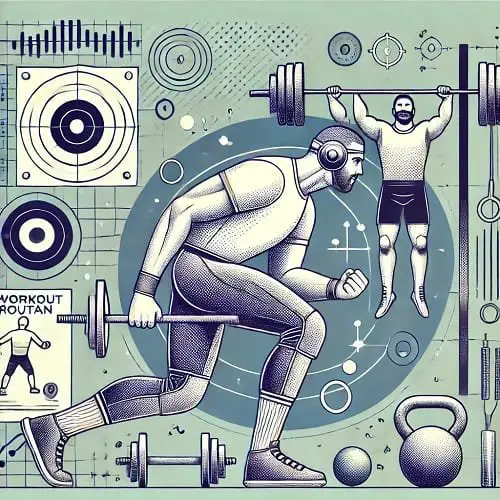
Here’s a sample wrestling fitness workout routine that targets the key components of strength and power. This workout is designed to build endurance, wrestling strength, and explosive power—ideal for any athlete looking to improve their performance on the mat.
Warm-up (10-15 minutes)
- Dynamic stretches (leg swings, arm circles)
- Light jogging or jump rope (3-5 minutes)
Strength Circuit (4 Sets)
- Deadlifts: 8-10 reps
- Squats: 8-10 reps
- Overhead Press: 8-10 reps
- Bench Press: 8-10 reps
Rest for 60 seconds between each exercise
Power Drills (3 Sets)
- Plyometric Jump Squats: 10-12 reps
- Kettlebell Swings: 12-15 reps
Rest for 60-90 seconds between each set
Conditioning (Sprints)
- Sprints (20 seconds full intensity, 40 seconds rest): 10 rounds
This fitness plan is designed to challenge your body in multiple ways, building both strength and explosive power. Start with lighter weights to focus on form, and gradually increase the intensity as your performance improves.
Conclusion: Master Your Wrestling Workouts for Maximum Strength and Power
To truly unlock your wrestling performance, mastering wrestling workouts focused on building strength and power is essential. By combining strength training, power drills, agility work, and proper recovery strategies, you can maximize your physical potential and reach your goals. It’s time to implement these routines and witness significant improvements in your overall fitness, explosiveness, and endurance.
Remember, consistency is key. By committing to these workouts and giving your best effort, you’ll be on your way to achieving the ultimate wrestling workout and becoming a more powerful, resilient athlete. Start today, and experience the transformation for yourself!
FAQ Section: Common Questions About Wrestling Workouts
How often should I train for wrestling?
It’s recommended to train 4-5 times a week, incorporating a mix of strength, power, and agility workouts. Allow for rest days to ensure proper recovery.
What are the best exercises for wrestlers?
The best exercises for wrestlers include deadlifts, squats, overhead presses, and kettlebell swings. These exercises build essential strength and explosive power.
How can I increase wrestling power?
To increase wrestling power, focus on explosive movements like plyometric exercises, sprints, and kettlebell swings. Power-focused drills enhance your ability to react quickly and generate force during a match.
These wrestling workout tips will guide you towards achieving your goals and improving your wrestling performance. Stay consistent, and always prioritize proper form and recovery.





